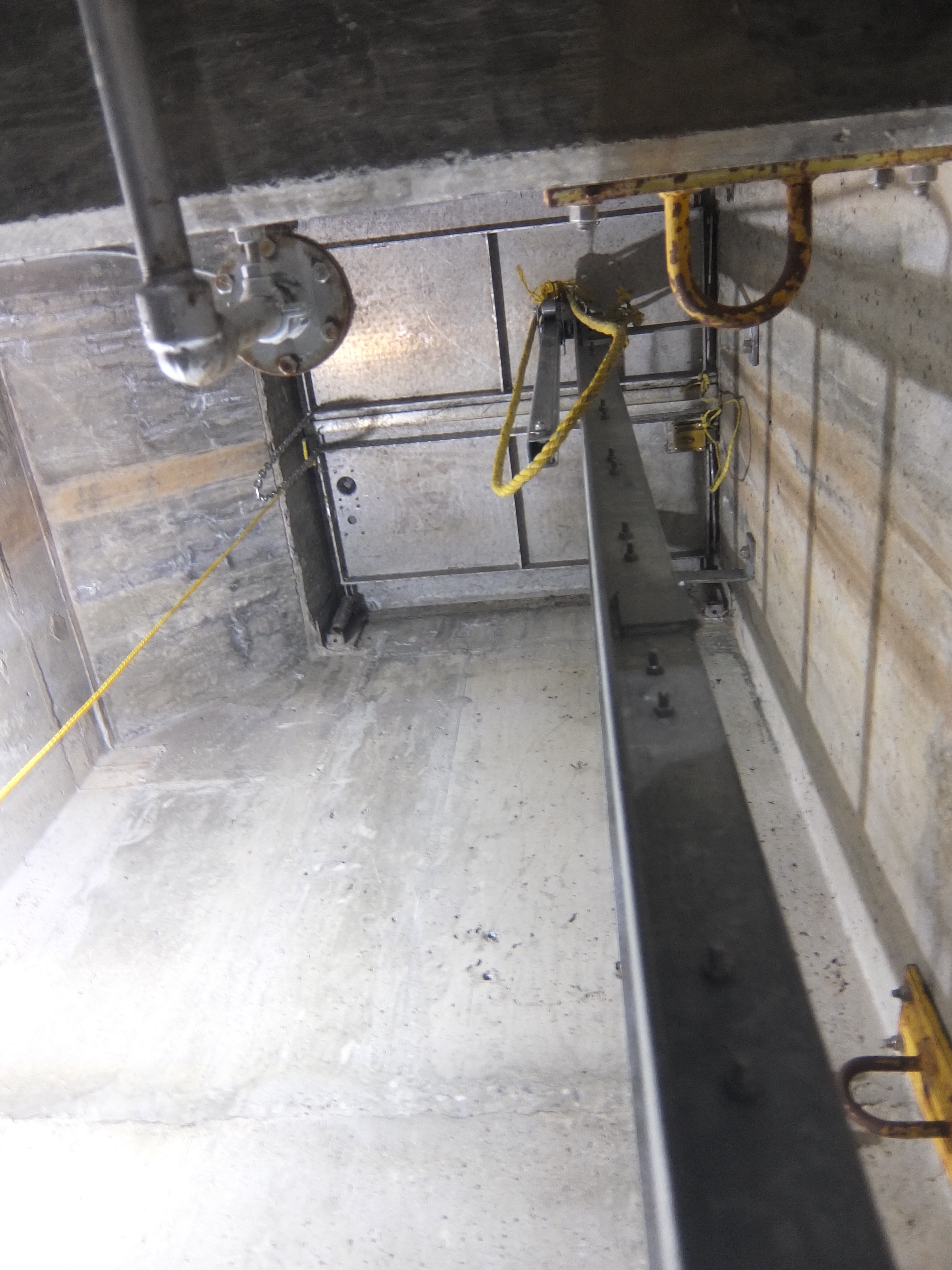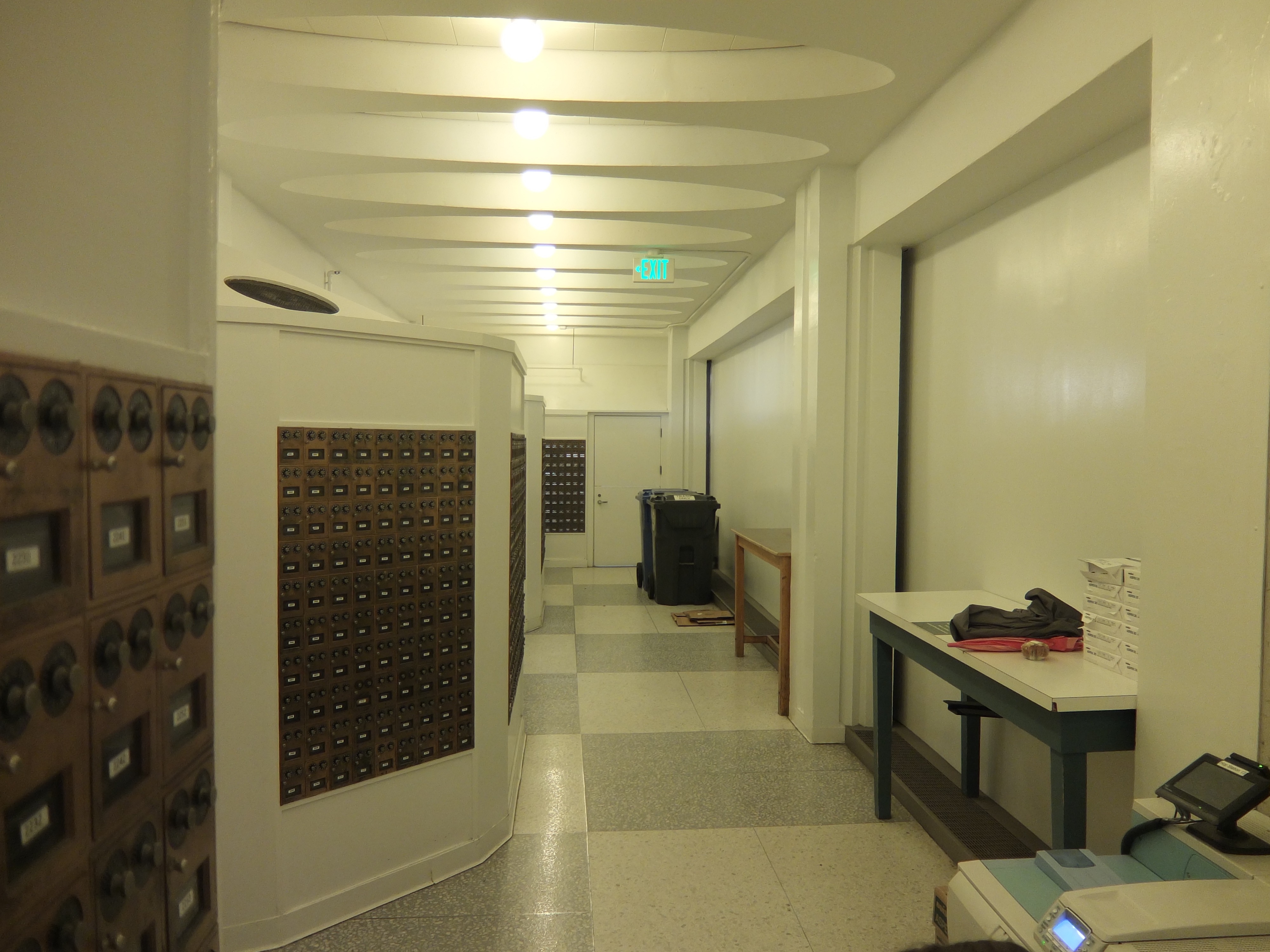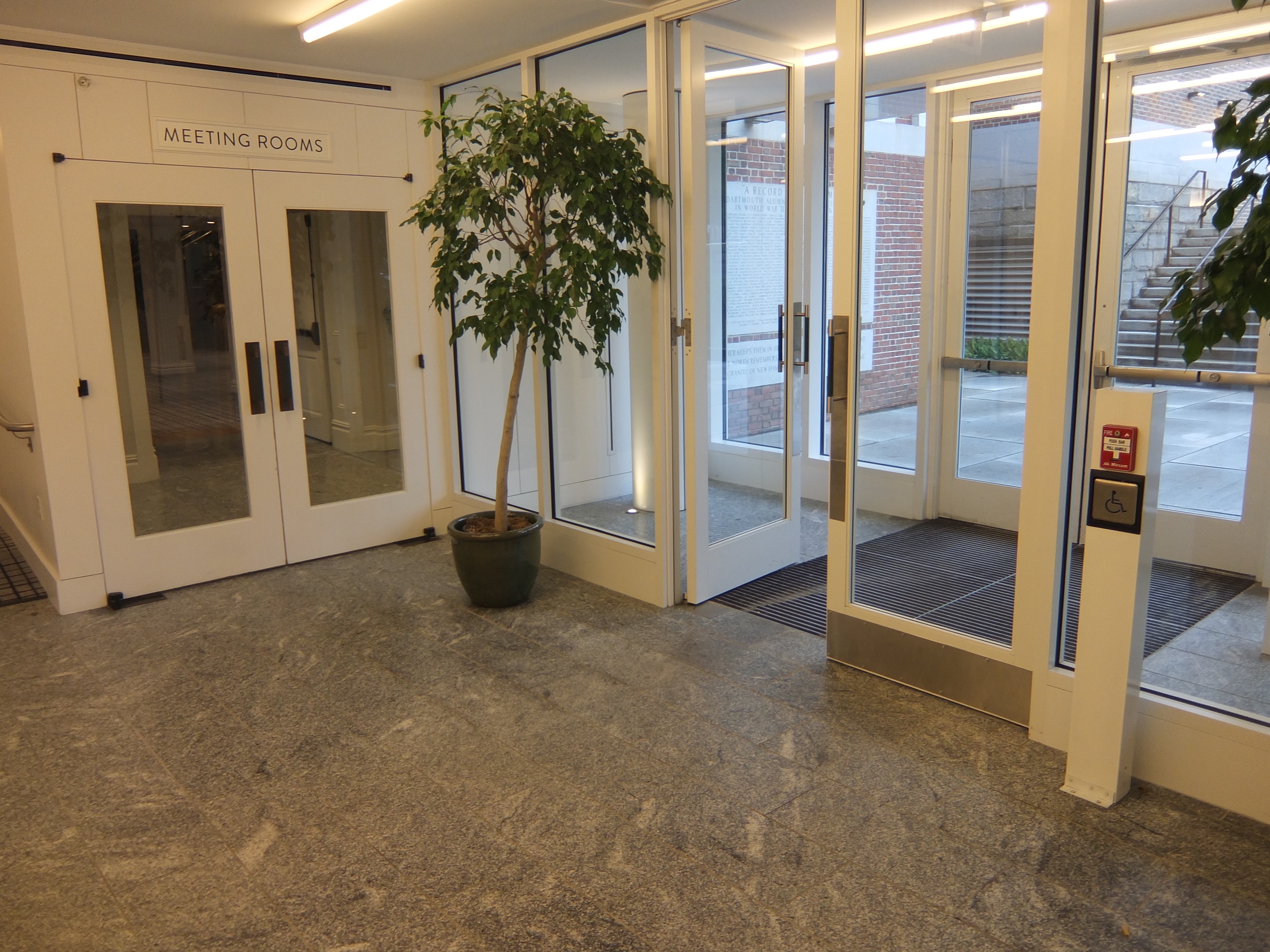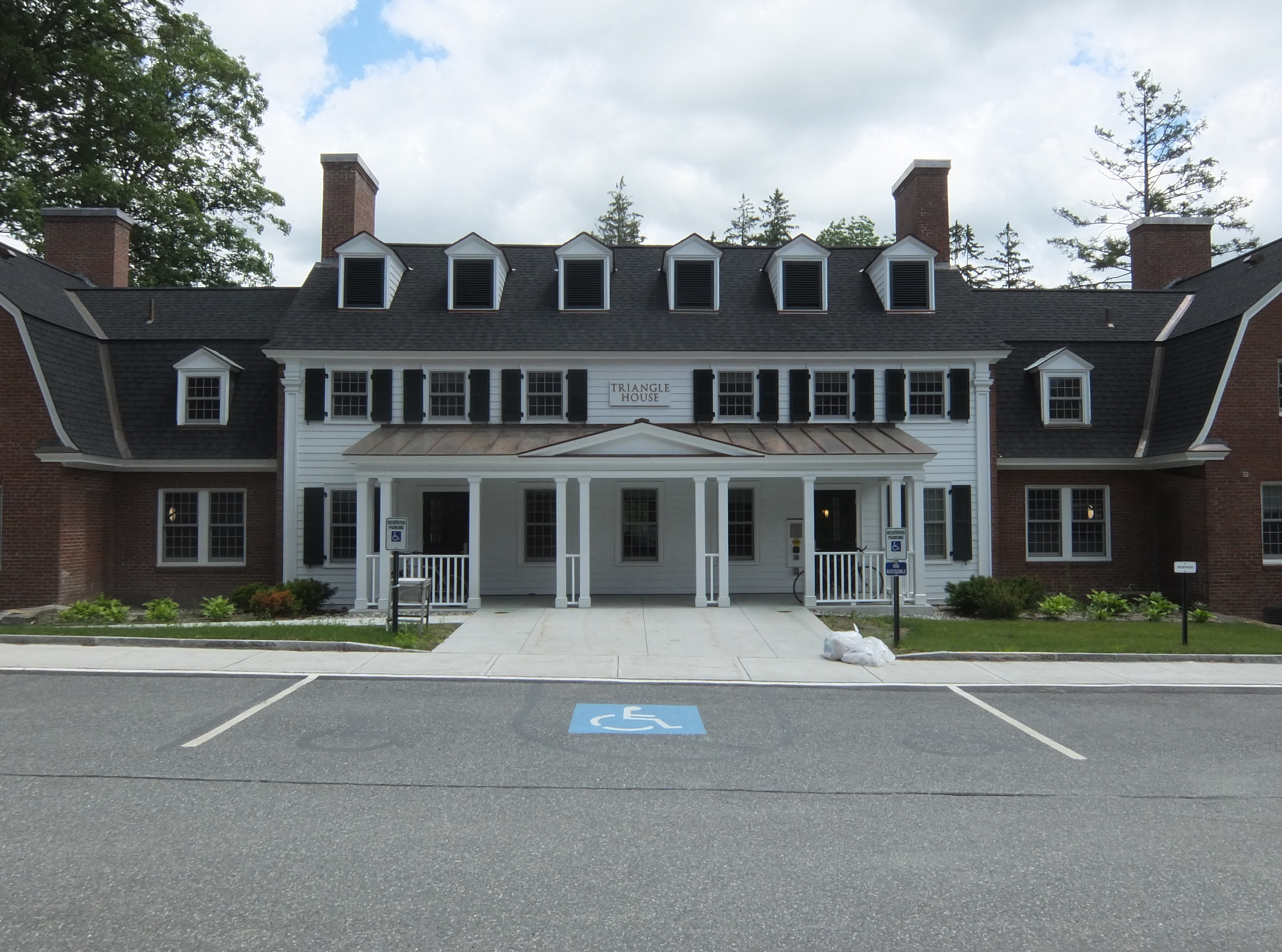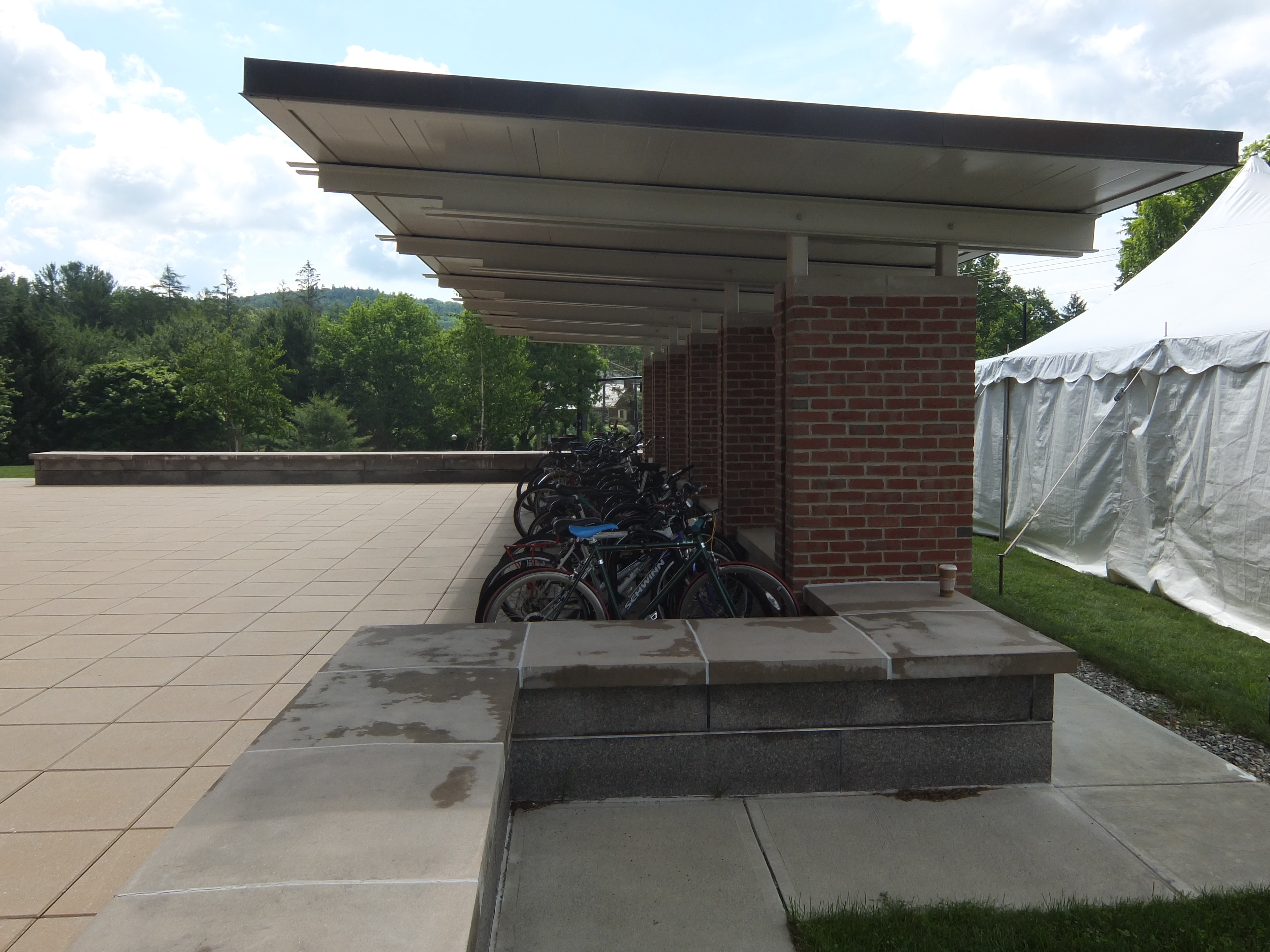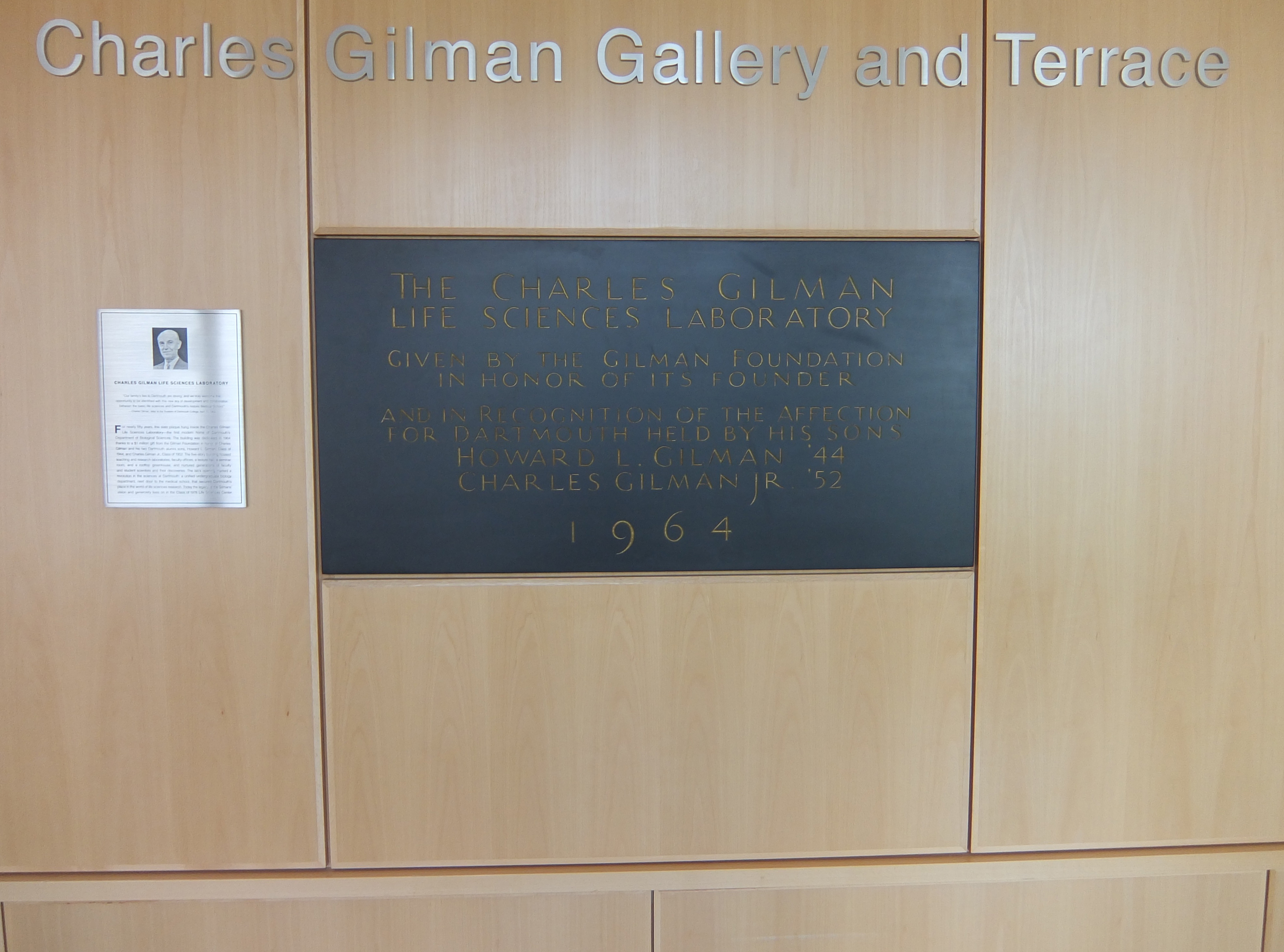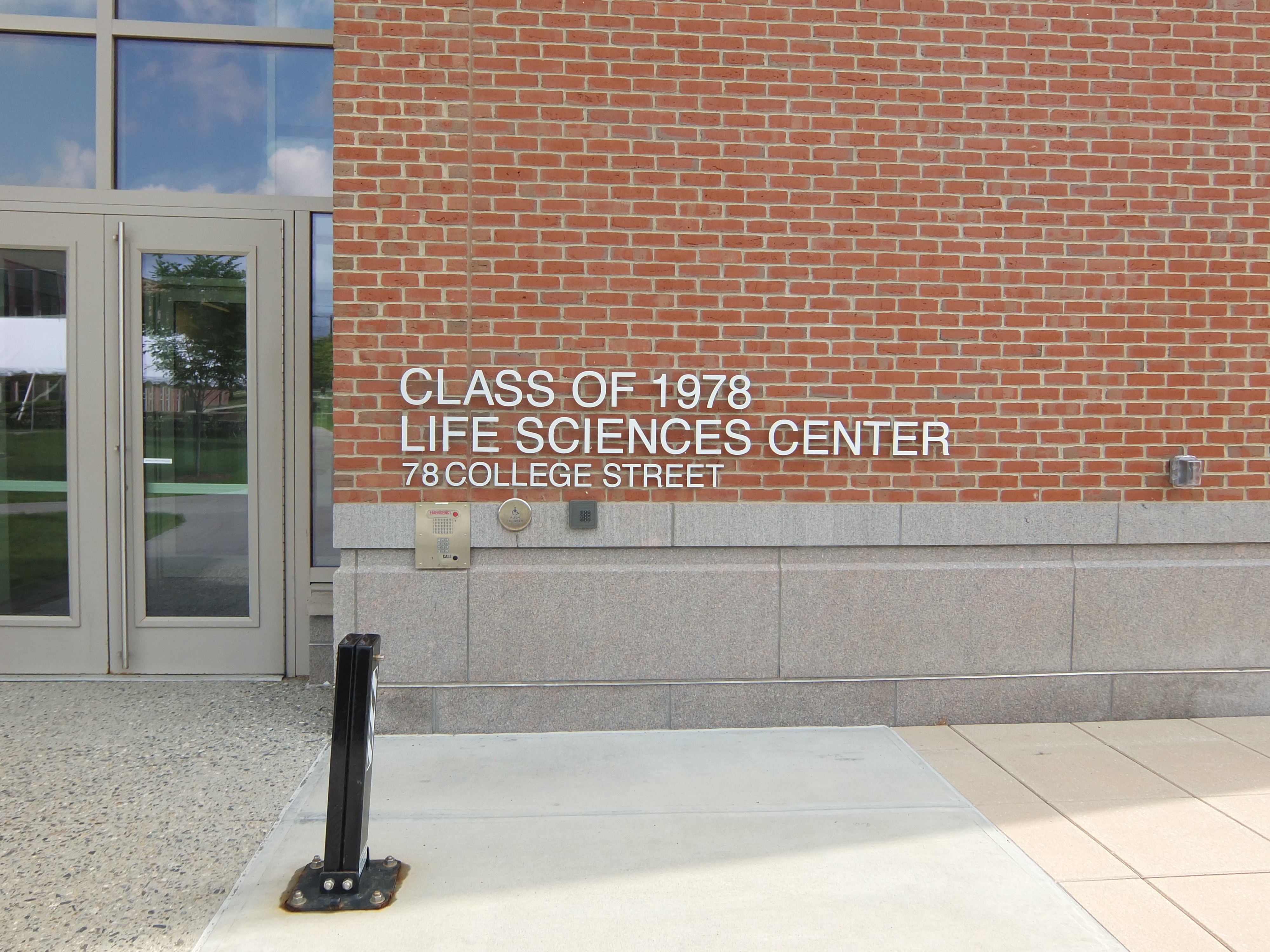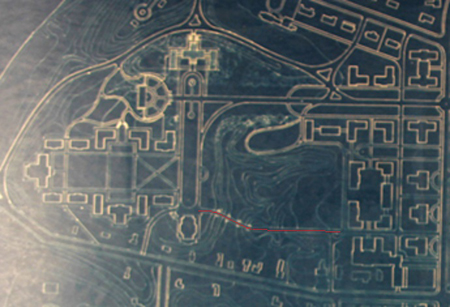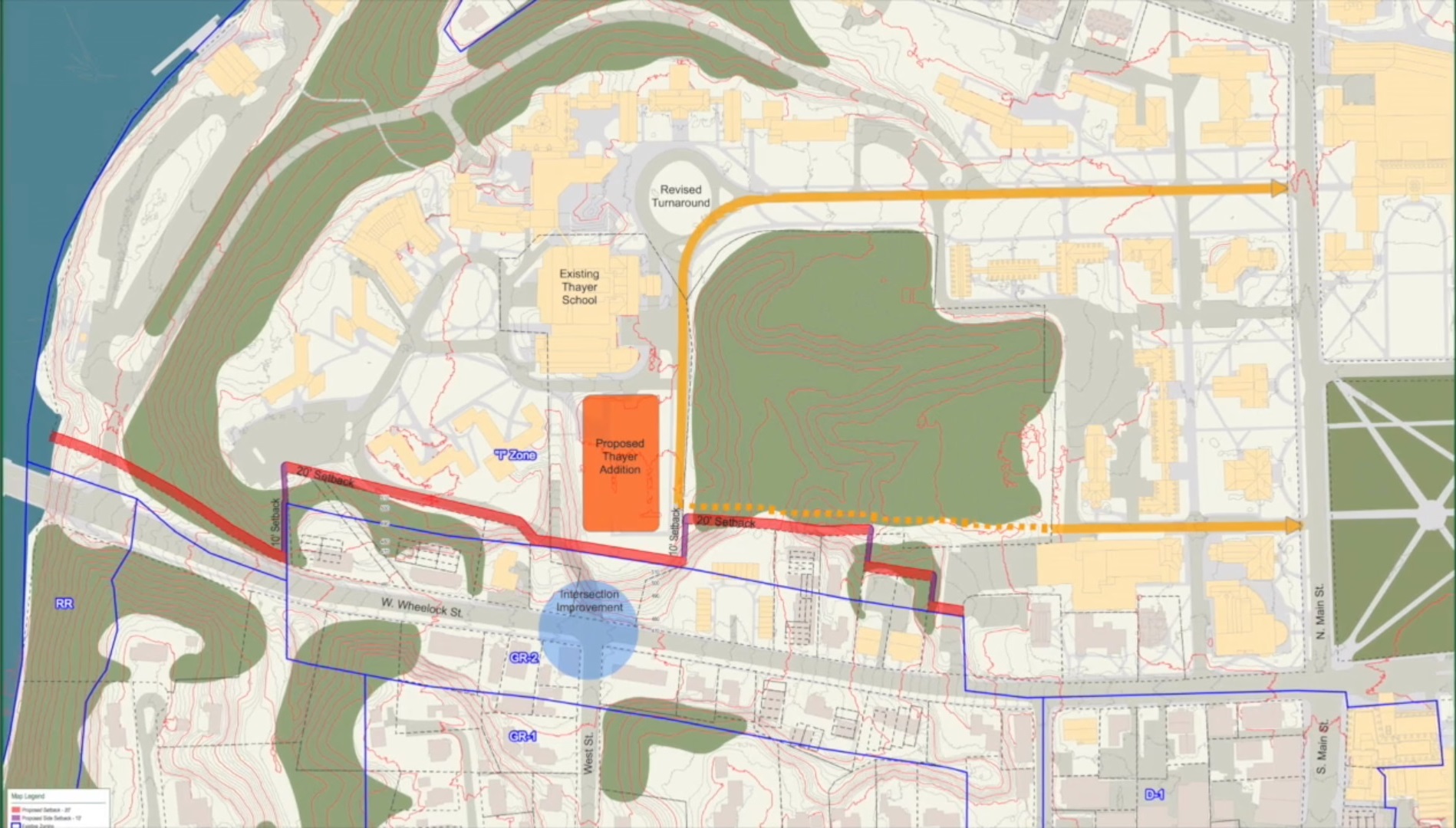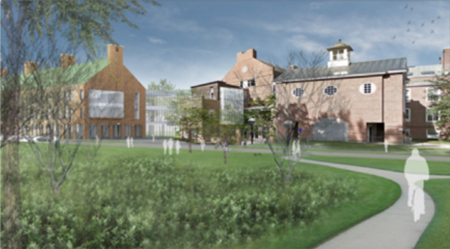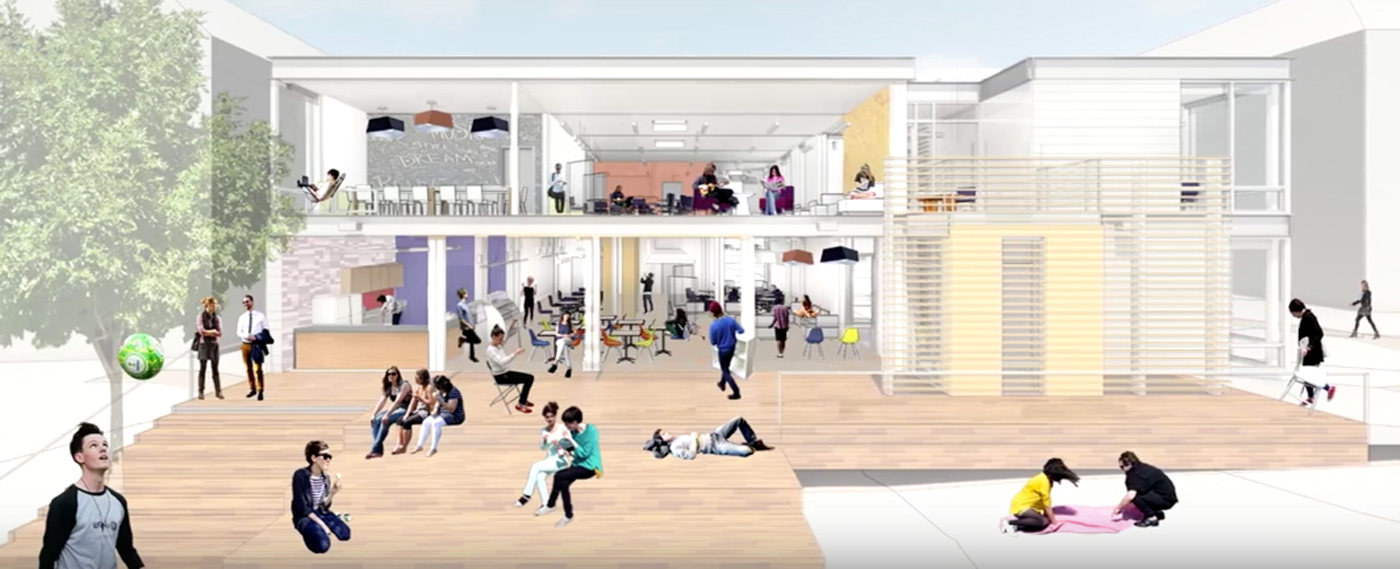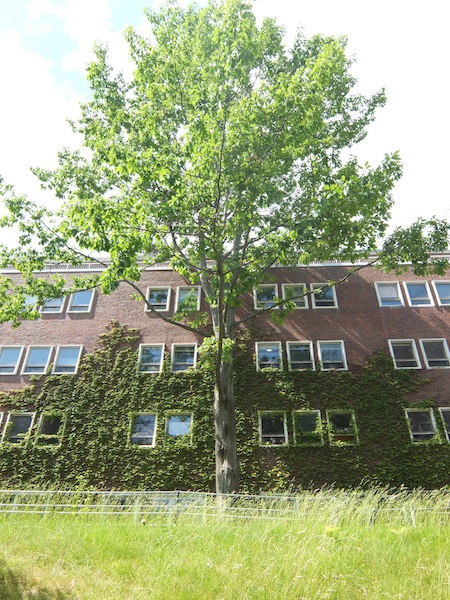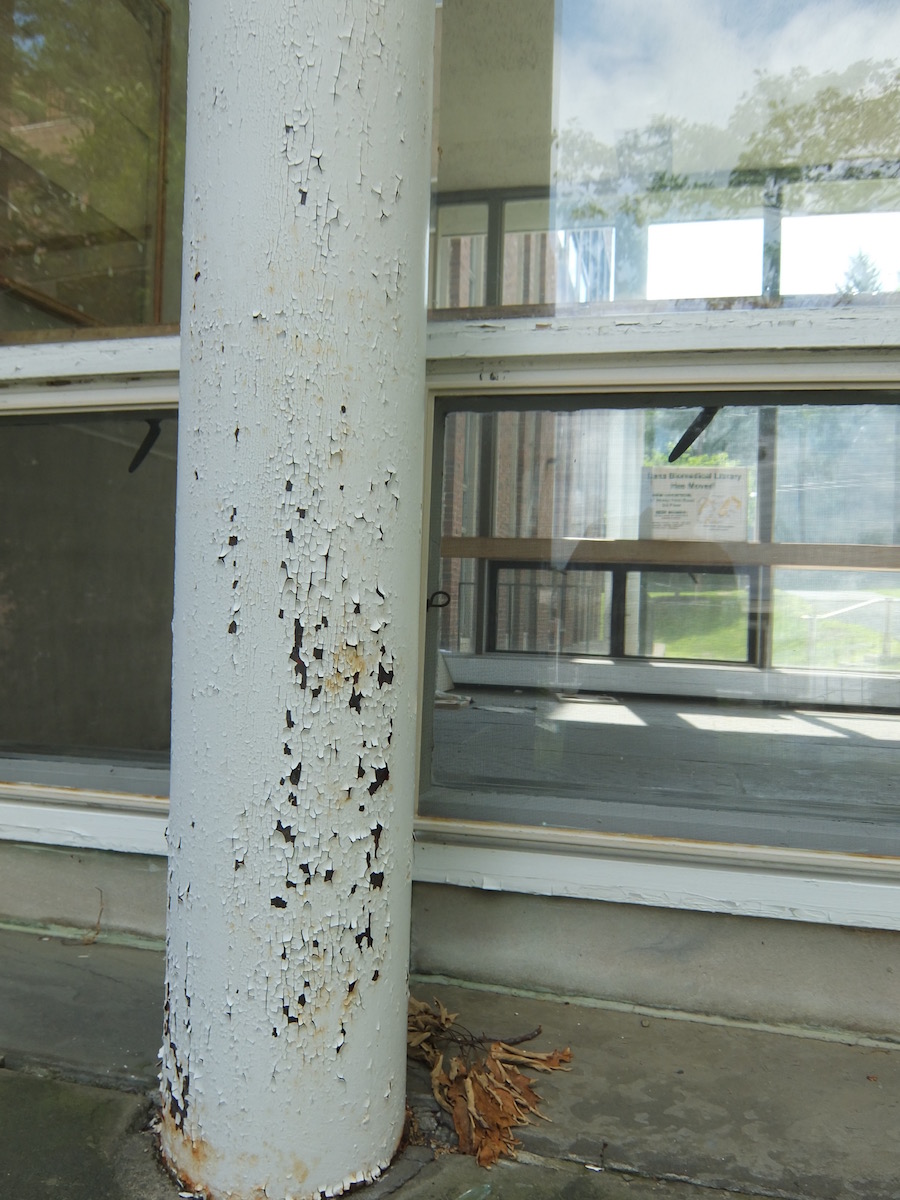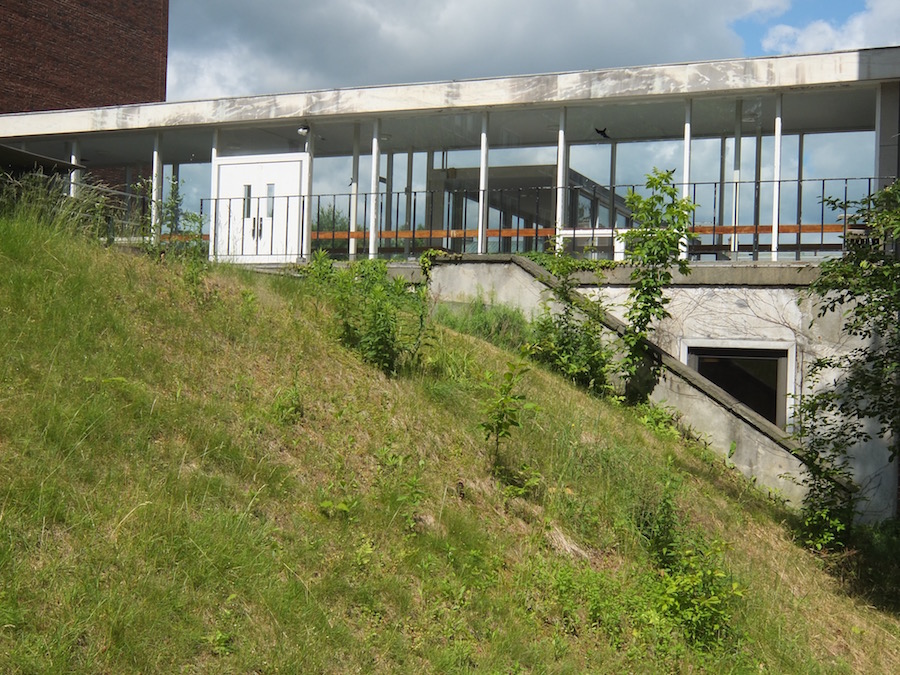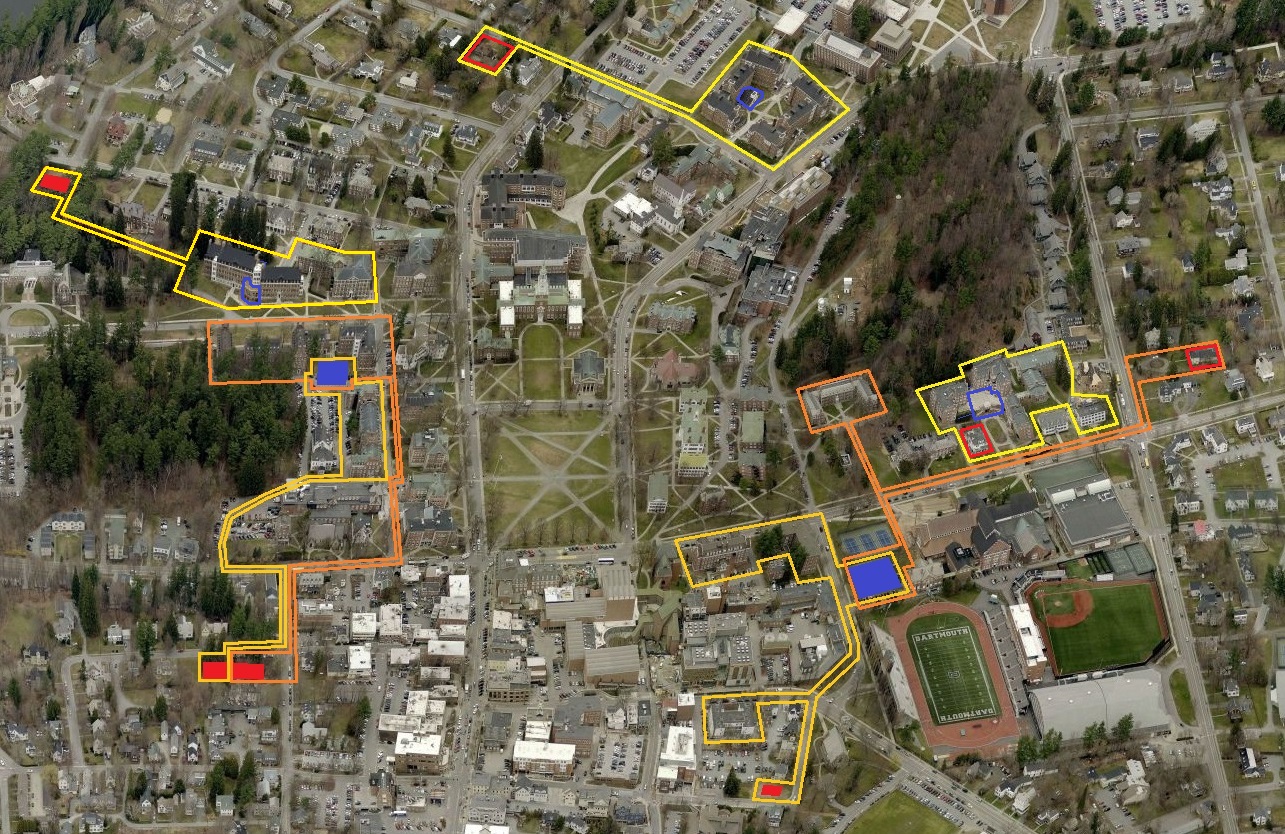President Hanlon recently announced that most of the dormitories will be divided into six groups to be called “house communities” or “Residence Communities.”
Elements
According to the announcement and Dartmouth Now, each House will have:
- As many as 700 undergraduates as members. That is an even division of the approximate total undergraduate enrollment of 4,200.
- “[A]pproximately half of” its members living “in residence during any given term.” Only sophomores, juniors, and seniors will live in the House, with first-year members continuing to live in existing first-year dorms. This puts the average number of beds in each house at 350.
- A “house professor” in residence. “House professors will serve four-year terms. … They will begin their on-campus residencies in the summer of 2016, in anticipation of house openings in September 2016” (Moving Dartmouth Forward opportunities). Each house professor is probably meant to have a freestanding dwelling located within or very near to the rest of the House. The prototype would be Frost House in the East Wheelock Cluster.
- Graduate students in residence. These members can presumably live in apartments converted from dorm rooms. An example might be the graduate advisor’s room in Ripley/Woodward/Smith.
- “[E]ventually,” a “dedicated space for study and social interaction.” This might be like the existing Brace Commons in East Wheelock — not a dining hall, but much more than a TV room in the basement.
The Six Houses
These, presumably, are the six communities, in ascending order of difficulty:
- East Wheelock. It was designed to work as a community, and it already incorporates a faculty house and social hall.
- The Russell Sage Cluster. It is another unified grouping with a social room located near existing housing in the form of the President’s House and Alpha Chi Alpha. It is near building sites on Webster Avenue.
- Topliff/New Hampshire and the Lodge. With the exception of the Lodge, which is slated for eventual demolition, this is a compact and unified group. Hallgarten could be turned into an excellent House Professor’s dwelling. If something larger than the existing lounges is needed, the Store House building behind Topliff could be an excellent social hall. There is space for new buildings next to the Gym.
- The McLaughlin Cluster. It has the social hall already. In the short term, the school could use an existing house for the professor: Parker House (shown), the Dean’s House (13 Choate Road), 3 Clement Road (west of LALACS), 44 North College, or even Sherman House. There is plenty of space here in which to add faculty housing.
- Massachusetts Row, the Gold Coast, and Hitchcock. It is coherent and effectively organized. South Fairbanks is the obvious faculty house, and North Fairbanks, which was built as a gymnasium, could become the social hall. The House could take over a room in ’53 Commons on a temporary basis if necessary.
- The Fayerweathers, Ripley/Woodward/Smith, and Wheeler & Richardson. In the near term, the Heorot House is theoretically available as a faculty house, although such a use would cause the same controversy as a takeover of AXA. Bartlett could be remodeled as the social hall (wow!), with a sympathetic addition to the east for the faculty house. The faculty house for this community could be built between Bartlett and the Sphinx or in a remoter location, such as alongside Richardson or Smith.
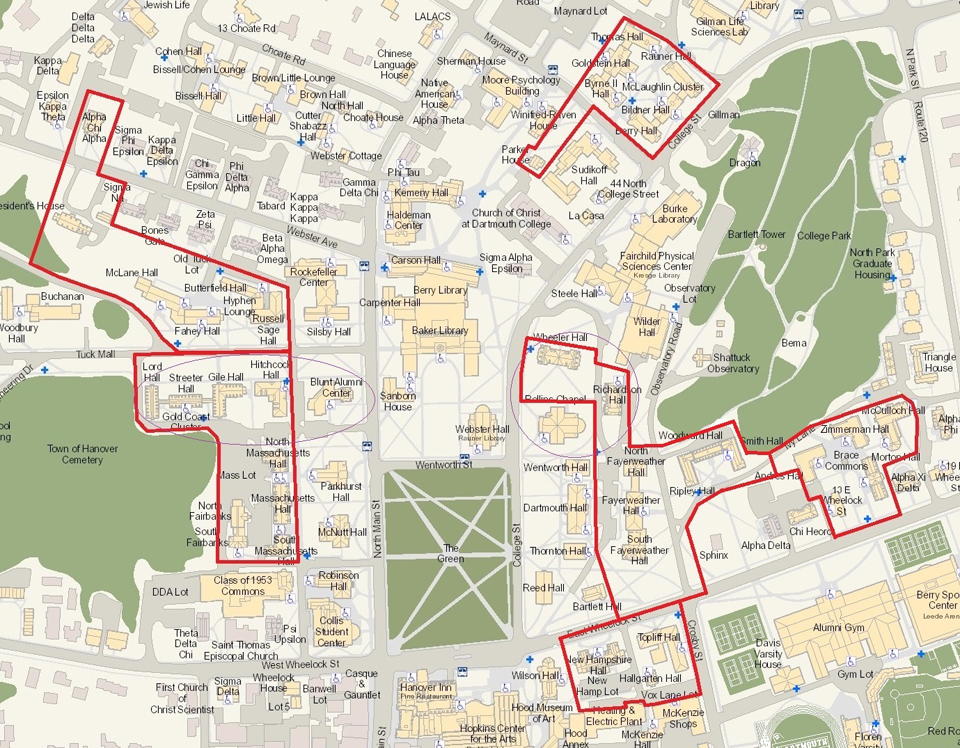 Speculative map of the Houses and their bounds
Speculative map of the Houses and their bounds
This map, based on the official mobile campus map, shows the six presumed Houses and their proposed bounds. It is important to create boundaries and manipulate them to create a street presence and a border with a neighboring rival if possible. Each House should have a main gate and edges marked by masonry walls or hedges, or at least permanent lines on the ground.
Initial Construction
Design and construction funds of $11.75m have been budgeted. Although Sasaki appears to be in charge of the planning for this system, the school is presumably hiring local firms to design the projects that might be called for.
Assuming that neither a fraternity nor the President is displaced from a college-owned house, and that existing dwellings are used wherever possible, even if they are too far away, the school could get by without erecting any new buildings. The construction work could be limited to the renovation of existing buildings as House Professors’ dwellings and existing dorms as graduate student apartments and especially social halls.
Dean Ameer said last month:
Right now we’re looking to create community spaces for the houses. We don’t have anything definite yet, but we will. Areas like McLaughlin were designed for that, so it’s going to work really nicely. This is a long-term project, over the next several years; we will hopefully be renovating each space as we go along. In the meant time, there are things we can do quickly to create more community space; I’m hoping to have a café in each [house], like the east Wheelock café.
Identity
“During the 2015–2016 academic year, these [house] professors will work with Student Affairs staff to select inaugural student leaders, develop house identities, and plan house programs” (Moving Dartmouth Forward opportunities).
As the Houses create their identities, they will come up with names for themselves. Perhaps the Enchanted Broccoli Forest of Stanford is too far-out, and one hopes Gryffindor and Slytherin will not be used, but there is room for some whimsy and arbitrariness. In any case, the Houses should not be known by their old “cluster” names. (The one exception is McLaughlin, the only cluster so particularly named; it honors an individual.)
In case no donors step forward, here are some terms associated with the history of each site:
- East Wheelock: College Park, Frost.
- The Russell Sage Cluster: Tuck Drive, Hitchcock Estate, Hutt of Loggs, Webster’s Vale.
- The McLaughlin Cluster: McLaughlin, Old Hospital, Mary Maynard Hitchcock.
- Topliff/New Hampshire and the Lodge: New Hampshire College, New Hampshire, A&M.
- Massachusetts Row, the Gold Coast, and Hitchcock: Gold Coast, Tuck Mall, Rich-Larson.
- The Fayerweathers, Ripley/Woodward/Smith, and Wheeler & Richardson. Fayers, Terrace, Tutors.
Future Houses: Shrinking by Building
Two of the six Houses listed above are larger than they should be.
The collection of Massachusetts Row, the Gold Coast, and Hitchcock would be better if the Gold Coast and Hitchcock were separated into their own House. This House would take over the Blunt Alumni Center as its House Professor’s dwelling and possibly its social hall (indicated by a purple oval on the map). There is also room for a new building or two.
The Fayerweathers, Ripley/Woodward/Smith, and Wheeler & Richardson are lumped together in an understandable attempt to avoid orphaning the low-capacity Wheeler and Richardson. This grouping simply does not work spatially. Wheeler and Richardson form a coherent group and should be separated into a new House (as suggested here in 2010). Without using SAE or Shattuck Observatory, locating a House Professor’s dwelling will be difficult. A house could be built near Richardson or Ripley.
———
[Update 09.18.2016: Broken Dartmouth Now link fixed.]
———
